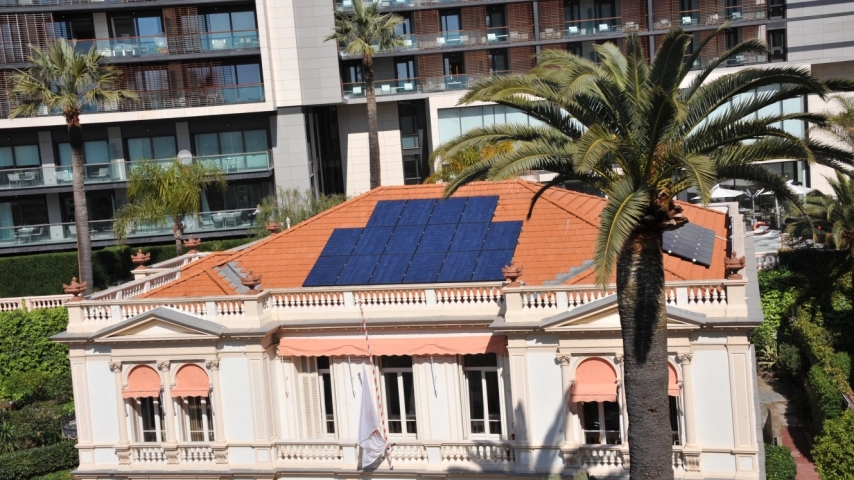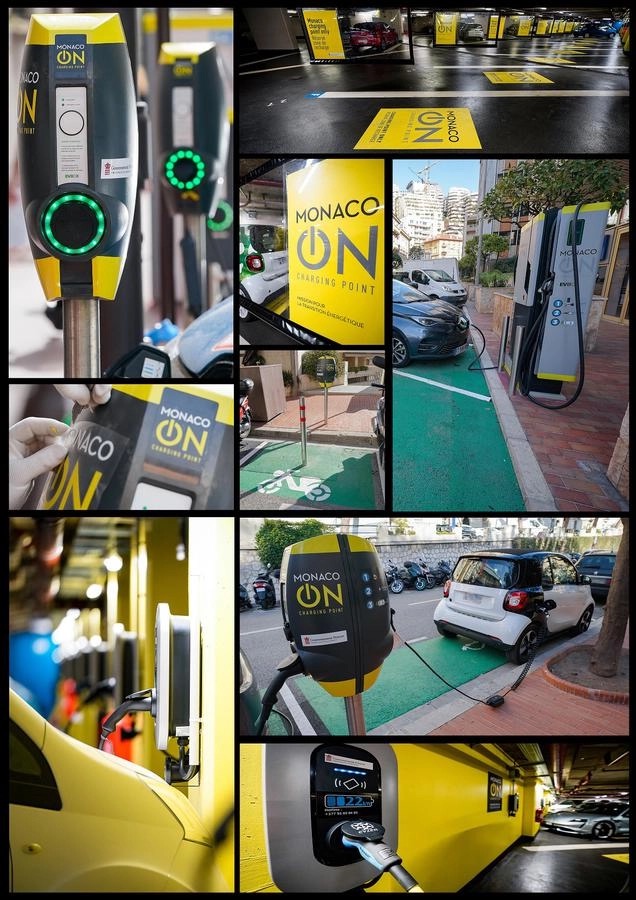
Photo credits: Mission for Energy Transition of Monaco.
Monaco, a 2.02-square-kilometer principality on the French Riviera, is expanding its electric vehicle (EV) infrastructure to meet its 2050 carbon-neutrality goal. With new charging stations and substantial incentives, the nation is prioritizing e-mobility, aiming to set an example for urban sustainability. But can a state synonymous with wealth and Formula 1 racing redefine itself as a leader in green transportation?
The “Monaco ON” network, launched in 2020, now includes over 600 public charging points, ensuring every resident is within 250 meters of a free charger. In 2024, 100 new stations were added at the Parking Salines, a 15-level park-and-ride facility designed to reduce daily traffic by 4,000 vehicles. Another 21 street-side chargers were installed in high-traffic areas like Port Hercule and Larvotto, using EVBOX technology with dual connectors for simultaneous charging.
Monaco’s incentives are straightforward: EV buyers receive subsidies for cars, two-wheelers, and quadricycles, plus free on-street parking, complimentary charging, waived registration fees, and discounted public parking subscriptions. These policies have driven EV adoption to over 20% of the vehicle fleet, up from 7% in 2020. The principality has also cut greenhouse gas emissions by 34.5% since 1990, partly due to reduced transport fuel use.
Challenges remain. Monaco’s electricity, imported from France, relies on a mix of nuclear and renewable sources, complicating its sustainability claims. Battery production and disposal also pose environmental concerns that the principality must address.

Photo credits: Mission for Energy Transition of Monaco. “Monaco ON”.
Still, Monaco’s efforts are deliberate. The National Energy Transition Pact engages businesses and residents to cut emissions 55% by 2030 from 1990 levels. Tools like the YourMonaco app, which shows real-time charger availability, and mandates for EV-compatible new buildings reflect practical planning. Monaco’s hosting of the 2025 G7 Environment Ministers’ meeting underscores its aim to influence broader climate policy.
Monaco’s EV push shows how targeted infrastructure and incentives can shift urban transportation. While its size limits global impact, the principality’s focus on e-mobility offers lessons for cities aiming to reduce emissions without sacrificing function.

